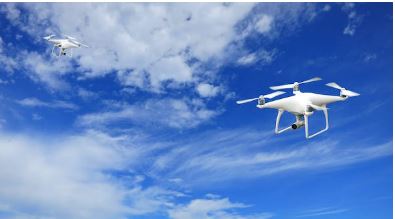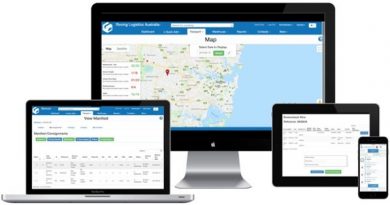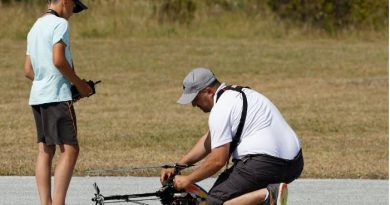The Role of Technology in Modern Construction Operations Management
As the world has digitized, so has the construction industry. Modern technology is a huge component of construction operations management. Apps, web software, and cloud-based solutions are some of the tools operations managers use to improve inter-team communications, manage projects, and streamline operations.
But what difference has technology brought to the table? How has it changed the construction operations manager job description, and how does it facilitate modern construction? In this article, we do some digging.
Contents [hide]
BIM in the construction industry
Building Information Modeling is a digital process that allows construction professionals, including engineers and architects, to create and share building models throughout a construction project’s lifecycle.
Since BIM is a collaborative approach, it has streamlined modern construction operations heavily. It includes the following components:
- Data management – BIM allows construction stakeholders to organize and manage large amounts of data, such as cost estimates, material specifications, construction schedules, and blueprints, with ease. Data management becomes a breeze during construction operations with a digital data repository.
- Collaboration tools – Collaboration is an essential aspect of a successful construction project. BIM allows construction stakeholders, including contractors, owners, engineers, architects, and subcontractors, to collaborate more efficiently. BIM also enables remote collaboration between team members located in different geographies.
- Simulation – Engineers and construction operations managers can use BIM to simulate different scenarios and analyze their impact on building performance. For example, they can simulate scenarios to determine the building’s structural stability and energy consumption.
- Documentation – BIM also allows construction operations managers to automatically generate documents like schedules, specifications, and drawings from the model.
Drones on construction sites
Site surveys are integral to construction operations management. One, they help identify a construction site’s conditions, including existing infrastructure, soil type, and topography. The information is necessary for accurate budgeting and planning.
Two, a site survey also provides construction managers with information about the shape and size of the site, which helps in the design and layout process. It allows maximum use of space and better functionality.
Gone are the days when site surveys had to be done manually. Drones are often equipped with advanced imaging technology such as a GigE Vision Camera, which has changed the game in this regard. Offering high-speed, high-resolution data capture for improved accuracy and efficiency.
Site surveying
Many construction sites now use drones to inspect structures and survey sites. Drones can capture high-res images of the site and record videos that teams can later view to make informed decisions about construction operations.
Topographic mapping
A standard tool that construction surveyors use is 2D topographic mapping. But 2D maps may be inaccurate or outdated due to terrain changes or rainfall-caused erosion.
Drones remove this uncertainty by using actual ground conditions to make up-to-date topographic maps. Here’s how they do it:
- Drones capture aerial images of a construction site from different angles using multispectral cameras, laser scans, and downward-facing sensors.
- Surveyors can stitch these images with photogrammetry software to create ortho-mosaic maps. Think of them as bird-eye views of the construction site but in 3D!
These maps are precise to the centimeter, easy to generate, and take a fraction of the time needed for conventional mapping methods.
Equipment tracking
As a construction operations manager, how often have you lost track of equipment locations? Tired of those scary-looking Excel sheets?
Drone cameras can make equipment tracking simple and accurate. You can use drones for flyovers to ensure the equipment is where it should be. Drones also allow you to see if any equipment that should have been terminated is still on the site, preventing extension charges.
Another common issue with equipment is malfunctioning. Drones can record malfunctioning equipment issues, providing visual representations that help construction operations managers communicate these issues to repair technicians.
Security surveillance
The National Insurance Crime Bureau (NICB) reports that $300 million to $1 billion worth of construction equipment is stolen every year from construction sites. That doesn’t include property damage or tool theft during the process.
Drones can be a construction operation manager’s on-site ‘eyes’ to ensure no equipment is missing. These cameras can also help keep trespassers and unauthorized individuals off construction sites.
Internet of Things (IoT) for construction site monitoring
Forbes expects the number of cellular IoT connections to increase to 3.5 billion in 2023. Many of them will be in the construction industry, helping construction operations managers optimize workflows, increase on-site safety, and reduce waste.
Here are some ways IoT plays a role in construction operations management:
Just-in-time (JIT) provisioning
Just-in-time (JIT) provisioning is an inventory system that ensures construction sites will only receive the exact number of materials they need when they need them.
Construction operations managers can label their supply units with radio frequency identification (RFID) tags. A relevant on-site system can count these tags.
When the count drops below a certain level, the system triggers a request for more orders from the central system. It helps reduce idle time, allowing construction companies to complete projects on time.
More importantly, it reduces waste since construction stakeholders do not order more supplies than they can use at once.
IoT surveillance cameras
IoT-connected surveillance cameras also help construction operations managers monitor machinery and the workforce remotely. These cameras allow project managers to link the workforce’s performance with on-site processes and tasks.
IoT wearables
The workforce can also wear IoT wearables. These devices monitor distress and fatigue signs through pulse elevations and rates. The data from these devices can help prevent potential accidents resulting from fatigue or a lack of alertness, increasing on-site security.
Concrete curing
Concrete curing sensors help speed up construction projects. These IoT-enabled devices use temperature probes to monitor concrete maturity. The real-time data from these devices goes to the cloud. Construction managers can then use this data to plan the subsequent construction work.
Augmented reality for project planning and modification
A well-planned project is likely to reach completion on time without budget overruns compared to poorly planned construction. Augmented reality allows construction teams to visualize designs and simulate construction processes before the project begins.
Construction operations managers can use augmented reality at different stages of the construction project. For instance, AR can help make 3D interactive models for client presentations.
These models can also be helpful in team discussions, project modifications, and reviews. Besides the pre-execution phase, AR helps project managers define inaccuracies and inconsistencies in the project structure.
Conclusion
Construction operations managers need to make technology adoption their priority. With IoT, augmented reality, drones, and other tech advancements by your side, you can ensure streamlined operations for every project.




